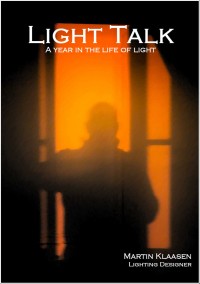The week that was 16-20th May 2016
Singapore – Hangzhou – Anji – Singapore, Weekend 21-22 May 2016
Back on the road again…this week to China in the lovely hinterland of Anji, known for its lush mountains and bamboo forests. The intensity of my visits here have increased over the last few months (I was here a little over a month ago) as we are nearing final testing and commissioning. The property is about to open next month and still a lot of fine tuning is needed. Before jetting off on Wednesday I had two days in the Singapore office which I used to introduce our new director of projects to the team so that a smooth transition can be hoped for when he starts in June. At the same time I had to deal with a project where the client is looking at going for the cheapest possible option but is asking us to do “life cycle” calculations to understand the impact.
New beginnings
Getting in new staff and certainly one that has to lead the team is sensitive. Some of my key designers have been with me for many, many years and are used to me and my ways of doing things so introducing a new layer of authority needs careful planning and introducing, so I had decided to ask him to come into the office prior to his official work start. We both felt that a few hours spent with each individual staff would facilitate the introduction and allow familiarisation with each other. I think it worked well and I really look forward to having him in our team.
Life cycle calculations
What our client really meant was doing ROI calculations to show the impact of using more or less expensive lighting systems. While it seemed like another bit of extra work we actually appreciated the request as it allowed us to explain why a superior quality and performance cost a bit more. We had prepared three options, one that we thought being the best, one being the next best still acceptable solution and one based on their “budget”, leaving out some components of the design to meet it. They wanted to know what benefits they would get for spending more than the budget. It allowed us to explain failure rates and lumen depreciation (L90/B10 at 50,000 hrs to L70/B50 at 30,000hrs or even less). On top of that we added in the power factor to reinforce the superior energy saving performance of the higher quality. This of course combined with other performance and quality criteria such as lighting effects, visual comfort and ease of operation and maintenance. We do not often get the chance to explain this properly and hopefully this will help them step over this ever so difficult to surmount “budget” threshold…
Emergency lighting.
The rest of the week was spent in Anji, China working through the lighting installation of our hotel project which had shown several issues and problems. The two main and key issues that we had to resolve were related to emergency lighting and not surprisingly dimming of LED. To start with the first, we had discovered during our last visit that for some inexplicable reason some lights in our circuits had been linked up with an emergency battery and even worse to a switch to actually switch it on or off in case of an emergency! Really? Yes really, not an automatic switch on after a power failure, no the idea was to go to the switch and switch it on! This had resulted in the odd single down light being on a separate switch and not addressable with our dimming system (great!) as well as some double headed down lights of which one was allocated to emergency lighting. I don’t have to explain the look of having some visually non-working lights (we had to switch the emergency lighting off). I am not sure which nitwit electrical contractor had dreamed this up, but obviously this had to be rectified. The simple solution agreed with the client was to locate an actual dedicated emergency light (the spitfire/UFO type) next to the current emergency light, de-connect the emergency from the architectural lighting circuits and reconnect the lighting point back into its intended circuit. Minimal work, easy fix…
Dimming.
The oh, so familiar LED dimming problems…and not in a sophisticated environment like Singapore or Australia, no this time deep in the heartlands of China! I have to explain that we came late into this project as originally this client did not even have a lighting designer. At the time the client had already engaged with local lighting suppliers and even though we did get a sniff at proposing suitable lighting fittings, the client moved ahead with the procurement of the lights. From there onwards it was always going to be a tough call but as we are doing several hotels with this operator we committed to help and try getting the best out of the situation. While we had never really heard of the local Chinese brand that was purchased, we did know even less about the dimming system that “appeared”. Backed with our control schedules we impressed on the need for testing the compatibility between the system and the lights, but never really got involved. Over the last visit we had already noticed the poor quality LED typical flickering and limited dimming range, with 10% measured dimmed level still looking like at least 50% or flickering occurring at the slightest dimming action. Most of us have experienced this at one point of time. While this was a typical case of “I told you so”, we had opted to help identify and rectify the problems as good as possible. The biggest handicap proving to be the at times impenetrable Chinese culture of not wanting to lose face and therefore choosing the patch up thinks rather than to speak up about the real problem. After another inexplicable flickering and dimming mal-function, I called a halt to all works and held a “war- meeting”. It was like peeling an onion, but after nearly two hours of talks and probing we got to the heart of the matter. We were dealing with a dimming system based on a leading edge protocol (no idea about what quality as the brand was unknown if any brand at all) and lights that were a mix of cut-phase and 0-10V protocols. Through trial and error they were trying to fix it…we ordered an immediate inspection of all lights in stalled to physically find out what was actually installed as it became clear that the test had been carried out on different samples! Since the lights were installed by the contractor without our involvement we only had his feedback to relay on. At least we have a fighting chance to dramatically improve and make sure we match light and dimmer protocol. Could we have avoided this? No. Could or should we have spotted this earlier? Yes, absolutely. The lesson? Never assume anything!
Despite all the challenges we are facing it is still going to be a lovely resort…
Have a great weekend.

















 The long awaited book compilation of Martin's first year of blogging is available. Order now.
The long awaited book compilation of Martin's first year of blogging is available. Order now. Feedspot Top 100 Lighting Blogs
Feedspot Top 100 Lighting Blogs